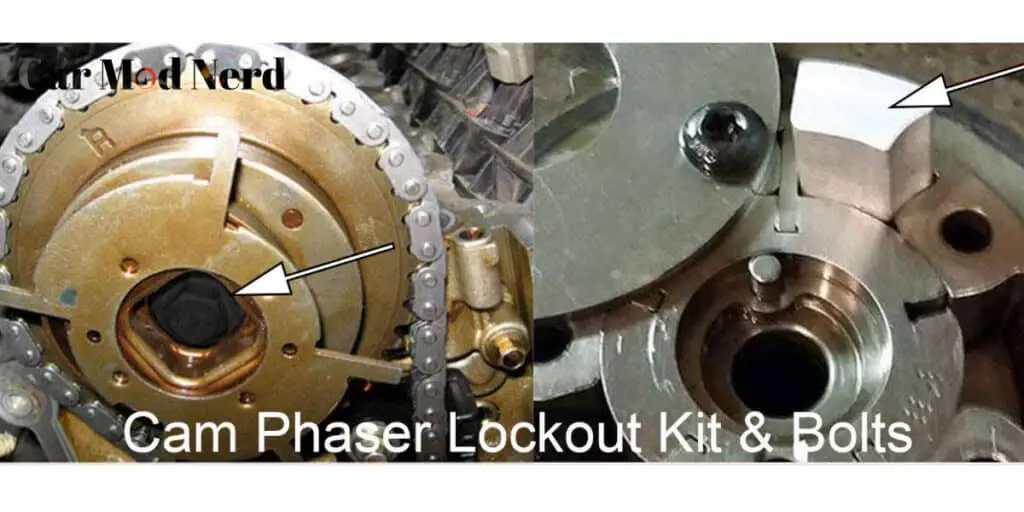Antifreeze coolant is a combination of water and chemical additives like ethylene glycol (EG) and/or propylene glycol (PG). It is known as radiator fluid for car. The antifreeze chemical additives are needed to depress the freezing point of water for safe driving in cold temperatures. Without these additives, the freezing point of water will be at 32 degrees Fahrenheit (0 degrees Celsius). Ethylene glycol is most common antifreeze chemical additive for cars. Propylene glycol is also growing in popularity because it has a lower environmental impact and less toxicity compared to ethylene glycol. Therefore, you may see antifreeze coolant for cars promoted as containing either PG or EG.
Don’t get confused with which oil grade to use again. Read my guide and understand the differences here.
Antifreeze Coolant
The global market size of antifreeze coolant was 5.4 billion and projected to grow 5.9 billion by 2025. Antifreeze coolant is used in automobile, HVAC and industrial plants. The growth is massive so does the environmental impact. Ethylene glycol can pollute our water sources if not disposed properly or leaked. It’s highly threatening for human, animal, plants and marine lives. Propylene glycol is recommended since it’s non toxic thus harmless for ecosystem.
Did you know you can get arrested for buying car with cash? Here’s how to avoid arrest for buying car with cash.
What Is Antifreeze
Antifreeze is a mix of different chemicals that function as a heat transfer fluid and prevent the cooling system fluids from freezing (radiator fluid). The base of antifreeze is an ethylene or propylene glycol mixture that also contains other additives, such as corrosion inhibitors and dyes.
Propylene glycol and ethylene glycol are the significant components of antifreeze. Ethylene glycol is an odorless, colorless, sweet-tasting liquid that is used as an antifreeze. See photos and videos here.
Glycol reduces the freezing temperature and boosts the boiling point of water in a vehicle’s cooling system. It allows the liquid moving through the engine bay to operate irrespective of the weather or season.
What Is In Antifreeze
Antifreeze is made of either Ethylene Glycol or Propylene Glycol. An antifreeze may sometimes have additives such as silicates, nitrates, or borates to help prevent corrosion or oxidation. These addictive substances usually make up less than 10% of the actual solution.
Vehicles use a 50-50 mixture of water and antifreeze. Some antifreeze is pre-mixed and already contains the proper moisture. Keep in mind to check the label on antifreeze to know if you need to add water to the antifreeze before you need it. See details here.
Types of antifreeze coolant are identified by the standard international coolant system they are designed for. There’s 3 Types of antifreeze coolant:
- OAT coolant (Organic Acid Technology)
- HOAT coolant (Hexylene Glycol Acid Technology)
- IAT coolant (Insertion-Acid Technology)
More on the types later.
Do you know what is cam phaser? Here you go.
What Is Engine Coolant
Coolant is the mixture of water and antifreeze that circulates through the engine as well as around components such as the radiator, heater core and hoses. It plays a large role in keeping your car’s engine operating at an optimal temperature, preventing it from overheating. Coolant also keeps the engine cleaner by preventing rust and corrosion.
Coolant is an essential part to any modern engine. The primary function of coolant is to keep the operating temperature of modern engines down below the engine’s self-destruction threshold. Coolant does this by removing heat from the air being inhaled and from the metal surfaces of your engine. A coolant system usually consists of a few basic parts; the coolant itself (usually an anti-freeze solution), passages throughout your vehicle for the coolant to travel, a radiator to dissipate heat from the coolant and finally one or more fans that are used in conjunction with the radiator.
Coolant is an ingredient mixed 50/50 with water to increase the temperature range that water freezes or boils. It is a specialized fluid that circulates throughout your engine to keep the machine working at the proper temperature.
What Is In Coolant
Coolant contains either ethylene glycol or propylene and it can be Green, Orange, Yellow, Turquoise, Pink, Purple or blue in color. Coolants also have different additives such as dyes, bactericides, corrosion inhibitors, and stabilizers that provide protection for your car’s cooling system. Over time these additives are depleted or become less effective. This is why you need to change your coolant as per the manufacturer’s recommendations.
Water has a freezing temperature of 32 ° and a boiling temperature of 212 ° Fahrenheit. When mixed with an equivalent amount of antifreeze, the freezing point of the resulting solution drops to minus 35 ° Fahrenheit. In contrast, the boiling point rises to 223 ° Fahrenheit.
What do you do when your engine fail? Leave your car to the service center, right? What if I tell you can get a free car from them? Here’s my guide on how to claim free loaner car.
What Does Antifreeze Coolant Do
Antifreeze coolant is a mixed liquid with a low freezing point than water used in the vehicle’s cooling system. The water pump circulates the mixture throughout the engine. It absorbs heat when it goes past hotter portions of the engine, and it delivers the coolant to the radiator.
Cold air flows through the radiator as the vehicle runs reduces the temperature of the coolant in the radiator. If you stall the automobile in traffic and the temperature rises, the fan will kick in. After running through the radiator, it sends the coolant back into the engine is at a lower temperature, where the cycle begins again.
If the temperature is freezing, the coolant may freeze, stopping it from circulating the engine and resulting in clogs and expansion damage. You add antifreeze to the coolant and combat this. It is an alcohol-based chemical that lowers the freezing point of water while increases the boiling point.
The fluid protects your engine against practically any weather if your coolant and antifreeze ratio is perfect. I prefer 50/50 antifreeze coolant to be on the safe side.
Antifreeze VS Coolant
Antifreeze is a solution of ethylene glycol or propylene glycol mixed with water. It’s main purpose is to stop the cooling system of your vehicle from freezing in sub-zero temperatures. This solution works by lowering the freezing point of water below the normal freezing point. Antifreeze is available in different colors, each color represents a standard used for testing, diagnosing, and specifying antifreeze that is compatible with the engine. The most common standard involves adding different corrosion inhibitors that protect against corrosion of metal components in the cooling system.
On the other hand, coolant is a solution of water and ethylene glycol or propylene glycol mixed with sodium or boron. Coolant is used to transfer the heat generated in your engine to the radiator, where it is cooled and recirculated. Coolant is available in different colors as white, red or blue depending on the additive (silicate and biocide). The use of coolant allows the engine to operate at a lower temperature, which results in less wear and tear.
Good grade coolants already contain antifreeze, so you won’t need to switch the liquid each season.
Is Coolant And Antifreeze The Same Thing
No, coolant and antifreeze are not same thing. Antifreeze is added to coolants as additive. Antifreeze is a chemical component added to engine coolant to minimize heat and the risk of freezing. In comparison, a coolant is the liquid that flows through the engine, into the radiator, and back into the engine to keep the engine cool.
While both serve the purpose of protecting your car, it is important to know the difference between antifreeze and coolant. Both are different types of fluids that pass through a vehicle’s radiator as radiator fluid, which is then circulated throughout the engine for cooling purposes.
- The main purpose of antifreeze is to protect the engine from freezing, coolant is to transfer heat generated in the engine to the radiator where it is cooled.
- Antifreeze works by lowering the freezing point of coolant, while coolant is used to transfer heat away from the engine.
- Antifreeze forms a protective layer on the engine’s metal components to protect it from damage from corrosion in sub-zero temperatures, while coolant is used to transfer heat away from the engine.
- Antifreeze is a mix of ethylene glycol or propylene glycol and water, while coolant is a mix of ethylene glycol or propylene glycol with sodium or boron.
- Antifreeze is more viscous than coolant.
- Antifreeze is used in different types of vehicles, while coolant is mainly used in cars.
- Antifreeze is used during winter season, while coolant should be used all year round.
You must keep the engine at the proper operating temperature all year, even in the winter. And your machine requires coolant on a year-round basis. The coolant must have antifreeze characteristics to prevent it from freezing in cold conditions. That’s why I use specialized all season antifreeze coolant.
Your car air conditioner also have antifreeze coolant in them. Sometimes your AC starts smelling bad, right? Here’s my quick fix. Read how to wash car seat covers here.
Best Antifreeze Coolant
Winter season brings with itself risky conditions for your car’s engine. The drop in temperature results in frost formation and If you leave the car outside overnight, it might get damaged by low temperatures and frost formation. One way to protect your vehicle’s engine from such problems is to use antifreeze coolant during winter season. Here’s my best all season antifreeze coolants.
Valvoline Coolant
- Cost-effective
- Durable
- Easily available
- The product label is wrong. It says it’s a concentrate, but it’s a 50/50 pre-diluted product
- Old technology
Valvoline 50/50 contains high-mileage additives. it’s genuinely universal for your coolant system. It will safeguard your water pump, thermostat, gaskets, and aluminum to ensure extended lifetime. With moderate use, the coolant lasts three months. Much use lasts for two months. See if it’s compatible for your vehicle here.
Prestone Coolant
- It is quality at a bargain price
- Works well for all vehicles
- Excellent for the car’s cooling system
- A sight line is not included in the plastic container to assist you in seeing what’s within. Plus, no matter how much backlight you have, you can’t see through the container
- After being left outside for a few days, the labels on both sides of the jug had entirely torn off. There are no usage instructions. It’s unclear whether it’s diluted or not
The product is affordable and widely available. It’s a modernized version of the classic green coolant used by veteran mechanics for decades. Being ready to use, you don’t need to source and mix up your own distilled water. Not all distilled water is equal. Find out the differences here.
It is an excellent product that is usable with any brand of coolant. It is pre-mixed, so there are no mistakes regarding a 50-50 coolant to water ratio. It is boosted with Core-Gard, and fights corrosion in the cooling system, promoting long life for cooling system components.
Zerex Coolant
- Cost-effective
- Works with most brands of automobiles
- Dependable, high-quality product
- Because of its faint yellow appearance, it might be challenging to read the level in reservoirs.
- The package is weak
Zerex antifreeze coolant is an outstanding value, and it comes pre-mixed, so there’s no guesswork trying to mix. It is the most cost-effective coolant for Volkswagen, BMW, Mercedes and other European vehicles. Compare Zerex coolant with others here.
How To Put Antifreeze Coolant In Car
Investing in the proper coolant for your vehicle is an excellent decision. Don’t buy any coolant until you’ve done your homework. To figure out how the product works, start by reading the owner’s manual and visiting the manufacturer’s website. It will let you know if the antifreeze you’re going to buy is compatible with your vehicle. Your safest bet is going with a universal antifreeze coolant.

To refill antifreeze coolant, follow these steps:
- Turn off the engine, let the vehicle cool down
- Find the coolant reservoir for the engine
- Monitor the coolant level
- Properly twist the coolant cap off
- Pour in the antifreeze coolant
- Place the cap back on once you’ve reached the cold fill line
My spill proof refill kit comes in handy avoiding any mess.
Can You Use Water As Coolant?
No, you shouldn’t unless it’s an emergency. Coolant is so crucial. It keeps your vehicle’s engine running smoothly for a long time in harsh operating conditions and temperatures.
The heat generated during the typical combustion process can build up quickly. It may get dangerously high temperatures. And can deform the cylinder head or cause the gasket head to explode. It might cause severe engine damage in other ways.
If you merely used water instead of the coolant combination, the high temperatures inside the motor would quickly boil the water and cause it to evaporate, leaving you with no coolant and an easy overheating engine.
Use a coolant reservoir disposal as soon as you get out of the emergency to clean and refill with proper antifreeze coolant.
Meanwhile, using only water in extreme temperatures could cause the water to freeze inside the engine, causing cracks in the radiator or heater core, cylinder head bending, and engine block damage.
Regularly check the coolant levels in your car to ensure they are enough and add more than needed, but always maintain a 50/50 water/coolant ratio.
Using the recommended engine oil is similarly important. Here’s what you need to know about best engine oil for ford.
Types Of Antifreeze Coolant
Now, let’s understand the different types of antifreeze coolant technologies before wrapping up.
OAT coolant – Organic Acid Technology
In the search for a better way to cool engines, several OAT (Organic Acid Technology) fluids have been developed. In general, OAT fluids are said to be long-life (over 2 years), low-toxic and non-flammable, the perfect solution.
OAT coolant for car engines is getting increasingly popular worldwide. Resistant to high temperatures, it allows engines to run higher outputs for longer periods of time without any type of engine overhaul.
Moreover, OAT coolants are environmentally friendly because they are based on glycol ethers, which have a neutral effect on the ozone layer (unlike previous glycol-based coolants). The product is also well suited for use in gasoline and diesel engines, power tools, metalworking machines, generators, and commercial vehicles.
I prefer checking my coolants using testing strip before and after each servicing.
HOAT coolant – Hexylene Glycol Acid Technology
Hexylene Glycol Acid Technology (HOAT) is an increasingly popular lower-cost alternative to OAT coolants. HOAT is basically the same as OAT but without the “Organic” part. According to some people, HOAT is not as good for aluminum radiators as OAT, but it is cheaper and does not contain the “Organic” part that some believe to be a health hazard.
HOAT coolant for car engines is fast being replaced by HLC antifreeze coolant, because of the latter’s ability to offer much better corrosion protection. HOAT coolants are still recommended for some heavy-duty vehicles & equipment such as off-highway trucks, locomotives, and mining equipment.
The main difference between the two is that OAT coolants are made from organic acids while HOAT coolant is made from inorganic acids. HOAT coolants are said to be less effective than OAT coolants however it is easier to get hold of and is less expensive.
In this respect, OAT coolants are probably a better choice for enthusiasts who want the very best, but HOAT may be a better choice for users who want a decent cooling performance without causing too much damage to their wallets.
Ensure you get original HOAT coolant before pouring by testing it. Here’s how to test coolants.
IAT coolant – Insertion-Acid Technology
IAT (Insertion-Acid Technology) is the latest development in the field of coolant. IAT has a similar structure to OAT but where HOAT and OAT have separate functions the IAT coolant works in synergy.
IAT is a bio-degradable organic acid technology coolant that contains an organo-modified polyphosphate corrosion inhibitor to protect metals commonly found in a PC such as copper, brass and steel.
IAT coolant for car is a relatively new product on the market. It should be differentiated from the other similar antifreeze such as glycol and organic acid, as it is saline to provide better cooling performance in car engines.
It also provides corrosion protection, inhibits bacterial growth and prevents the freeze-up – due to the high temperature of the engine.
IAT coolant is called “cooling system” because it is not only designed to meet the cooling requirements of the engine but also its corrosion and freeze resistance requirements.
IAT coolant contains high purity glycol and deionized water, plus corrosion inhibitors to protect the cooling system. It is used in all types of engines including gasoline, diesel, steam turbine and air-cooled aviation engines, and can be used to protect the cooling system in high temperature conditions.
IAT coolants are as good as they come original. Here’s how to determine the coolant quality step by step.
Antifreeze Coolant FAQ
Antifreeze coolant contains a mixture of water with a chemical called ethylene glycol (EG) or propylene glycol (PG). Antifreeze in radiator coolant fluid prevents the water in a car engine from freezing in cold weather. Glycol is toxic to humans. If swallowed, it can cause serious problems including kidney damage. It has a sweet taste which can attract children and animals so antifreeze coolant should be kept out of their reach.
Nothing to worry about when your oil pressure is low, it’s just your engine dying, not you. Here’s how I saved mine. How much did you make on your first job. Here’s what I made from my first car sale.




